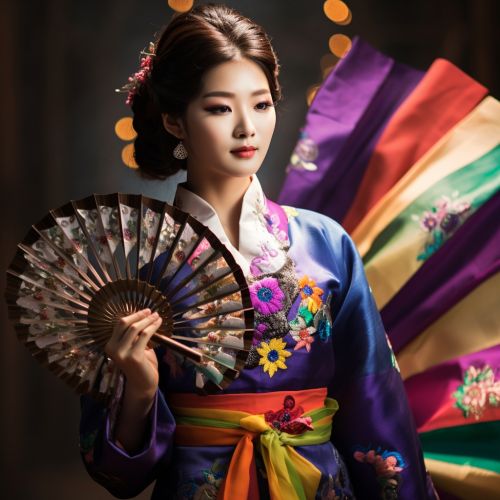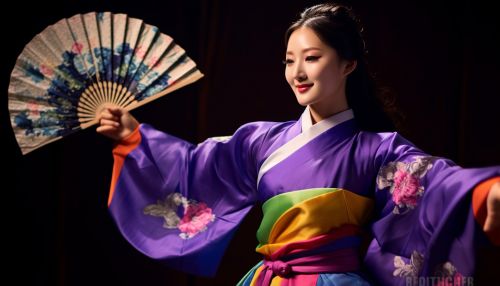Korean dance
Origins and History
Korean dance originated from ancient shamanistic rituals thousands of years ago. By the time of the later Korean kingdoms, Goryeo and Joseon, in the 2nd millennium AD, Korean traditional dance benefited from regular support of the royal court, numerous academies, and even an official ministry of the government.
A number of different dances gained permanent high status, including the intricate Hoeryong dance performed by the royal princesses. However, the depth of Korean dance extends to the common people, where strong and vibrant tradition of folk dance is passed from generation to generation.
Types of Korean Dance
There are several major types of traditional Korean dance: court dance, religious dance, and folk dance.
Court Dance
Court dance was used to honor the king and royal ancestors, and the best dancers often became court officials. The most famous of the court dances is the Jinju Geommu, a sword dance.
Religious Dance
Religious dances include all those used for prayer or shamanistic rituals. The Salpuri dance, for example, is intended to exorcise grief.
Folk Dance
Folk dances developed among the common people and exist in a number of different forms, as group dances, pair dances, and individual dances. The Ganggangsullae is a traditional circle dance performed by women.
Characteristics of Korean Dance
Korean dance is characterized by a low center of gravity movement, with the majority of the dance being performed quite close to the ground. This style contrasts quite a bit with ballet or modern dance, styles in which light and airy movements are sought after.
Korean dance is also characterized by the lack of a rigid body line and the emphasis on the angular, asymmetric left-right movements of the dancer, the twist of the body, and the bending and extending of the knee to bring about a larger space of motion.


Influence and Impact
Korean dance has had a great influence on other forms of dance, providing inspiration for and influencing the direction of modern dance. It has also spread to other countries, particularly those in the surrounding region, like Japan and China.
